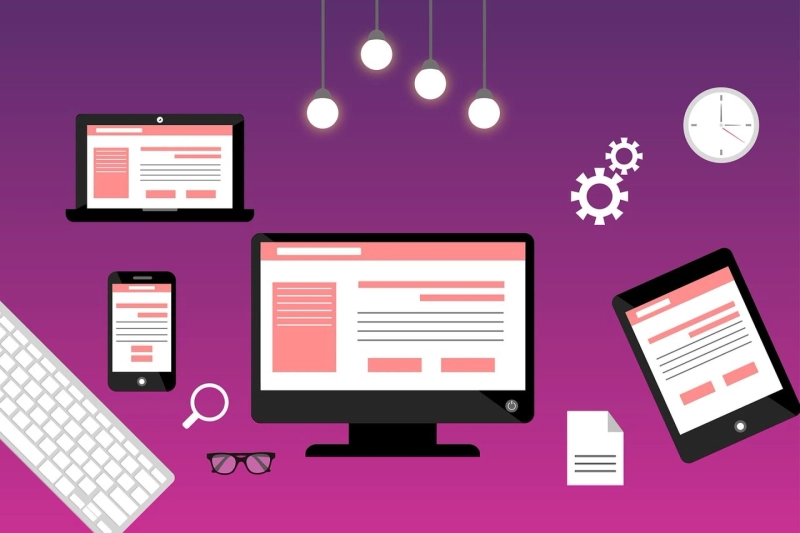Imagine stepping into a concert hall. The lights dim, the air crackles with anticipation, and then, the first notes flood the space. Colors dance in your mind's eye, mirroring the melody's playful pirouette or the mournful cello's lament. In the same way, color in web design acts as a musical conductor, orchestrating emotions, guiding attention, and shaping the user's entire experience.
Beyond aesthetics, color is a powerful force in the digital world. It's more than just visual eye candy; it's a strategic tool that influences user behavior, builds brand identity, and ultimately, determines the success of your website. Let's delve deeper into the symphony of color and understand why it deserves a starring role in every web design masterpiece.
1. Color Speaks Louder Than Words:
Remember the adage "a picture is worth a thousand words"? In the digital realm, color often takes center stage, communicating emotions and meanings even before users engage with text. Studies show that users form their first impression of a website within seconds, and up to 90% of that evaluation is based on color alone. A vibrant teal palette evokes freshness and innovation, while a deep mahogany scheme whispers luxury and sophistication. Choose your colors wisely, for they speak volumes before a single word is uttered.
You May Also Like: High Risk Merchant Accounts at Highriskpay.com
2. The Emotional Palette:
Colors aren't merely visual sensations; they are emotional triggers. Red screams excitement and urgency, perfect for a sale countdown. Green exudes tranquility and reliability, ideal for a health and wellness website. Blue inspires trust and security, making it a natural fit for financial institutions. Understanding the emotional resonance of each color allows you to craft a website that speaks directly to your target audience's hearts and minds.
3. Building Brand Recognition:
Imagine Nike without its swoosh or Coca-Cola without its vibrant red. Color is an integral part of brand identity, creating visual anchors that build instant recognition and trust. By consistently using a specific color palette across your website, social media, and marketing materials, you create a cohesive brand image that becomes ingrained in users' minds. Think of color as your brand's unique melody, a leitmotif that resonates with every touchpoint.
You May Also Like: How to Buy Ethereum on eToro
4. Guiding the User Journey:
Color can be your silent tour guide, directing users' attention and influencing their navigation. A contrasting button in a complementary color begs to be clicked, while a subtle text in a muted tone might blend into the background. Use color strategically to highlight important information, call-to-action buttons, and key sections of your website. Think of it as visual breadcrumbs, leading users on a smooth and intuitive journey toward your intended goals.
5. Accessibility: Harmony Beyond Hues:
While a kaleidoscope of vibrant colors can be visually stunning, remember that not everyone experiences color the same way. Accessibility is paramount, and color choices must cater to users with visual impairments or color blindness.
You May Also Like: Choice Home Warranty Awards
Opt for high contrast ratios between text and background, and be mindful of using color alone to convey information. Remember, the symphony of color should be inclusive, ensuring everyone enjoys the performance.
6. Cultural Considerations: A Global Palette:
The world is a diverse stage, and color meanings can vary drastically across cultures. What signifies peace in one culture might signal mourning in another. Research your target audience's cultural context before finalizing your color scheme. A seemingly innocent choice can lead to unintentional cultural faux pas, disrupting the harmony of your web design.
7. Trends: A Melodious Interlude:
While color psychology lays the foundation, staying abreast of design trends adds a contemporary flourish to your visual symphony. Explore popular color palettes, emerging gradients, and innovative applications of color theory.
You May Also Like: Easyjet Holidays
However, remember that trends are fleeting guests in the design orchestra. Use them to add spice and freshness, but ensure your core color scheme remains timeless and true to your brand identity.
8. Experimentation: Finding Your Perfect Chord:
Don't be afraid to experiment and refine your color choices. Test different palettes with user groups, gather feedback, and iterate until you find the perfect harmony.
You May Also Like: YouTube to mp3 converter
Use online tools and color inspiration boards to explore visual possibilities. Remember, the most beautiful design is one that resonates with your audience and aligns with your brand's message.
9. Accessibility Tools: Tuning the Orchestra:
Several tools can help you ensure your website is accessible to everyone. Contrast checkers analyze color combinations for readability, while color blindness simulators show how your design appears to users with different visual impairments. Use tools like RGB to Hext Converter to fine-tune your color palette and make sure everyone can enjoy the full melody of your design.
10. Staying Fresh: Reorchestrating the Symphony:
Just like musical trends evolve, so should your color palette. Regularly audit your website and consider refreshing your color scheme every few years. Keep an eye on emerging trends, user feedback, and brand updates to ensure



